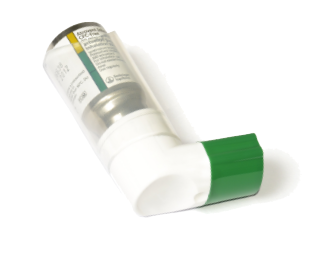Question 1: For pediatric asthma, does albuterol and ipratropium (combined) show benefit over albuterol alone?
Depending on where you practice, inhaled short-acting beta-agonists (SABAs) such as albuterol/salbutamol combined with an anticholinergic such as ipratropium go by numerous names (Duoneb, Combivent, A&A, Breva, Duolin, etc). They come in both nebulized and meter-dosed inhaler (MDI) formulations. In kids with asthma exacerbations, practitioners may or may not supplement SABAs with anticholinergic medication (eg, ipratropium bromide). Does something this simple potentially make a difference?
A 2013 Cochrane systematic review and meta-analysis by Griffiths and Ducharme explored, in particular, whether the addition of anticholinergics to SABAs—when compared to SABAs alone—reduced hospital admissions when treating initial asthma exacerbations.1 This meta-analysis included 19 studies (N = 2,497 total patients), and ipratropium bromide was the anticholinergic of choice in 18 of these 19 randomized studies. Sixteen of the 19 studies involved multiple doses (predominantly two or three doses), and the patients’ ages ranged from 18 months to 18 years. In regard to the primary outcome of hospital admission, the risk ratio of SABA/anticholinergic to SABA alone was 0.73 (95% CI, 0.63–0.85), suggesting that the addition of an anticholinergic (eg, ipratropium) to SABA (eg, albuterol) decreases hospital admissions. The number needed to treat (NNT) for beneficial effect was 16, and most children treated demonstrated moderate to severe asthma exacerbations at presentation. A previous systematic review by Rowe et al had found similar results regarding hospital admissions.2

Since that 2013 Cochrane review, a separate randomized controlled trial by Wyatt et al compared a multidose regimen of SABA (salbutamol) plus ipratropium bromide to SABA alone.3 All patients received corticosteroids, and the salbutamol and ipratropium were delivered only via MDI. The study included 347 children with moderate asthma exacerbations. The admission rates for these asthma exacerbation treatments demonstrated no significant difference and were 70 percent and 64 percent, respectively, suggesting that ipratropium did not decrease admission rates in this population. One major limitation of this study, though, included missed patients, as the authors missed nearly 75 percent of eligible patients during the enrollment period. With this noted bias, it is difficult to determine the significance of their findings in the overall clinical picture.
Summary
The addition of anticholinergics (eg, ipratropium bromide) to SABAs (eg albuterol) in the treatment of acute asthma exacerbations in children appears to decrease the risk of admission. Most of these studies incorporate multiple doses of anticholinergic medication.
Pages: 1 2 | Single Page






No Responses to “Are Pediatric Lungs Just Little Adult Lungs?”